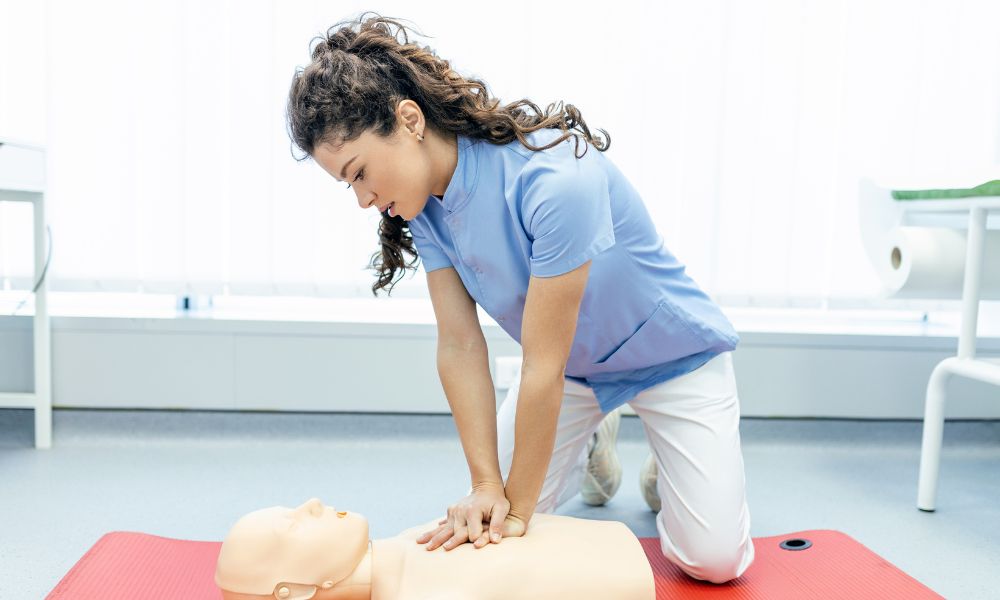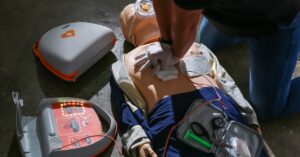When a person experiences a life-threatening arrhythmia, or their heart stops, those certified in cardiopulmonary resuscitation (CPR) will perform lifesaving breaths and chest compressions. This lifesaving maneuver provides vital oxygen to the body, while chest compressions mimic heartbeats, allowing blood to flow to vital organs such as the brain and lungs. With how incredible and helpful CPR is, it begs a few questions—what is the history of cardiopulmonary resuscitation? What were its early forms? Who invented it, and how has it changed over time?
The Earliest Descriptions of CPR
It’s difficult for medical historians to pinpoint when the first instance of CPR occurred, as many early descriptions are unclear and still up for debate. Some would argue that the earliest description of CPR occurred in ancient Egypt in the 24th century BCE, over 2,000 years ago. The Osiris myth was an incredibly influential story in Egyptian mythology and described Isis resurrecting her brother Osiris with the breath of life. Is this merely a coincidence or a reference to something more? After all, the ancient Egyptians were an intelligent and highly advanced society in science and medicine.
Other early descriptions of CPR are in the Bible, specifically in the Book of Genesis and the second Book of Kings. The book of Genesis depicts God breathing life into the nostrils of Adam. The second Book of Kings depicts the prophet Elisha successfully performing mouth-to-mouth on a dead child. Again, these depictions make medical scientists question whether the first methods of CPR truly occurred when they did or if ancient peoples were more advanced than originally surmised.
The 1400s to the 1500s: The First Resuscitation Methods
It is thought that the first recorded resuscitation method occurred in the 1400s when a Persian physician named Burhan-ud-din Kermani used an early CPR method. This method involved moving the patient’s arms to expand the abdomen and compressing the left side of the chest. Unfortunately, this method did not become very popular, although if it had, early doctors might’ve made strides much sooner.
Later in the 1500s, early physicians developed what’s known as the flagellation method. A rescuer would whip the victim with their hands, a wet cloth, or stinging nettles to stimulate a response. The idea was that this would shock the body by inflicting pain on the unconscious patient. Around this time, people also noticed that the body would go cold when someone passed. To remedy this and potentially bring them back to life, hot water, embers, or burning dry excrement was applied to the body to restore heat.
It wasn’t until the 1530s that the bellow method appeared. People noticed very early on that when a person died, they stopped breathing. Paracelsus, born Theophrastus con Hohenheim, was a Swiss physician who invented the bellow method. This method required a rescuer to seal a victim’s mouth, place the end of a fireplace bellow into a person’s nostrils, and pump air into their lungs. As you may have guessed, this did little to save a person and mostly damaged their lungs further with cinders and ash.
The 1600s to the 1700s: CPR’s Early Days
In 1667, a scientist named Robert Hooke postulated that it wasn’t “the motion of lungs without fresh air” that killed a person. Rather, he contested that it was the continuous supply of fresh air that was necessary for life. He proved this by opening the thorax of a dog and keeping it alive by pumping fresh air in and out of its lungs. Then, many years later, in 1732, a Scottish surgeon named William Tossach successfully resuscitated a suffocated coal miner using mouth-to-mouth breaths. While it remains uncertain, it’s likely that Tossach was aware of and used Hooke’s found knowledge.
Fortunately, in 1740, the Academie des Sciences in Paris, France, made mouth-to-mouth resuscitation their official recommended method for drowning victims. Despite their recommendation, the Royal Humane Society—founded by London physicians Thomas Cogan and William Hawes—rescinded their support of mouth-to-mouth resuscitation. Instead, they stated that their preferred method was the bellows method, which is why it remained one of the most popular CPR methods until 1829. However, this didn’t stop other early scientists and physicians from creating their own methods.
Out of the 1700s came two other methods: the inversion and barrel methods. The inversion method required rescuers to string someone by their feet, hoist the rope, and pull it up and down to raise and lower the body. The idea was that this method would expel air from the lungs to expel water and add pressure to the chest to aid breathing. The barrel method had rescuers lay the victim over a barrel, hold them by their feet and roll them back and forth. Much like modern CPR, the goal was to simulate respiration by applying and releasing pressure on the chest.
The 1800s: The Hall and Silvester Methods
Another CPR method arose in the early 1800s, known as the trotting horse method. Rescuers would place a person over a horse, and when the horse would trot, the bouncing motion would press and expand the lungs. The body hanging over the horse would also help expel water from the lungs.
However, in 1856, a London physician named Marshall Hall introduced his technique where he would roll the patient from side to face up, adding pressure on the thorax. Then in 1858, another London physician named Henry Silvester would lay the patient down, raise their arms over their head, and then cross their arms over their chest. This movement applied consistent and repetitive motion, allowing the lungs to exhale. Many CPR methods came out of the 1800s, such as the Leroy and Dalrymple methods, but the Hall and Silvester methods remained the most popular until the early 20th century.
The 1900s to the 2000s: Strides in Medical Science
By the 1950s, scientists across the globe made many strides in medical science. Dr. George Crile from Cleveland, Ohio, confirmed that chest compressions could restore circulation by experimenting on dogs. He then went on to successfully repeat these compressions on a human. Twenty years later, six cardiologists founded the American Heart Association (AHA). They connected cardiologists worldwide in the 1950s when they began publishing a scientific journal about cardiovascular breakthroughs.
This would help Dr. Elam and Dr. Peter Safar’s findings and techniques influence medical science worldwide. In 1956, they proved that mouth-to-mouth resuscitation was effective. Then, in 1960, Safar, along with Drs. Kouwenhoven and Jude, combined these lifesaving breaths with chest compressions, creating what we know today as CPR. The AHA began to provide formal CPR training in 1960 and officially endorsed CPR in 1963. Today, emergency dispatchers conduct CPR instructions over the phone, and CPR guidelines to resuscitate infants and animals have been officially made and endorsed by the AHA.
The vast and interesting history of cardiopulmonary resuscitation poses a few other exciting questions. How will this method evolve, and where will medical science go? Heartsaver First Aid CPR and AED training will keep you up to date on all the science behind modern CPR. When you receive your certificate, you’ll walk away with all the knowledge, confidence, and courage it takes to step up and potentially save lives.








